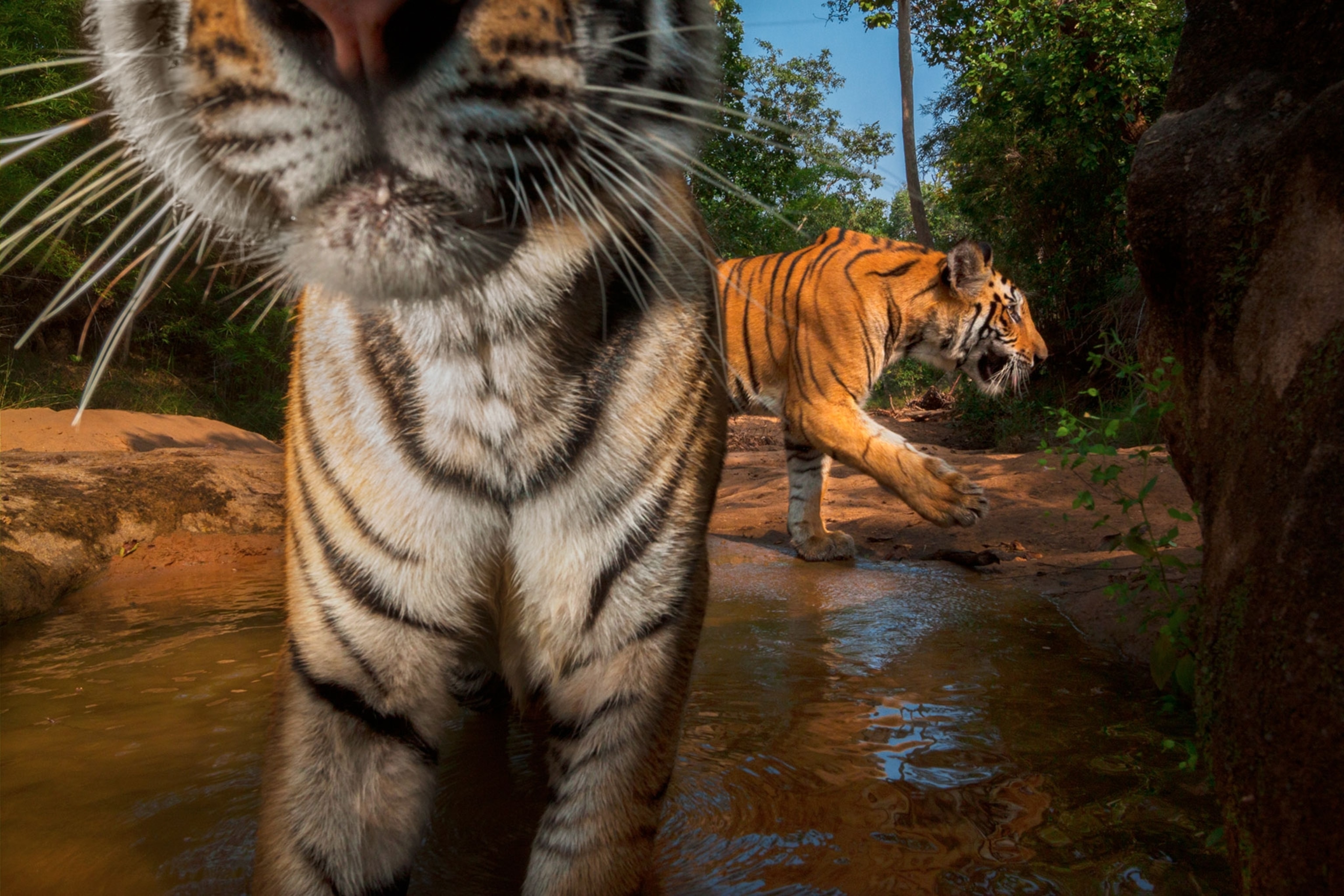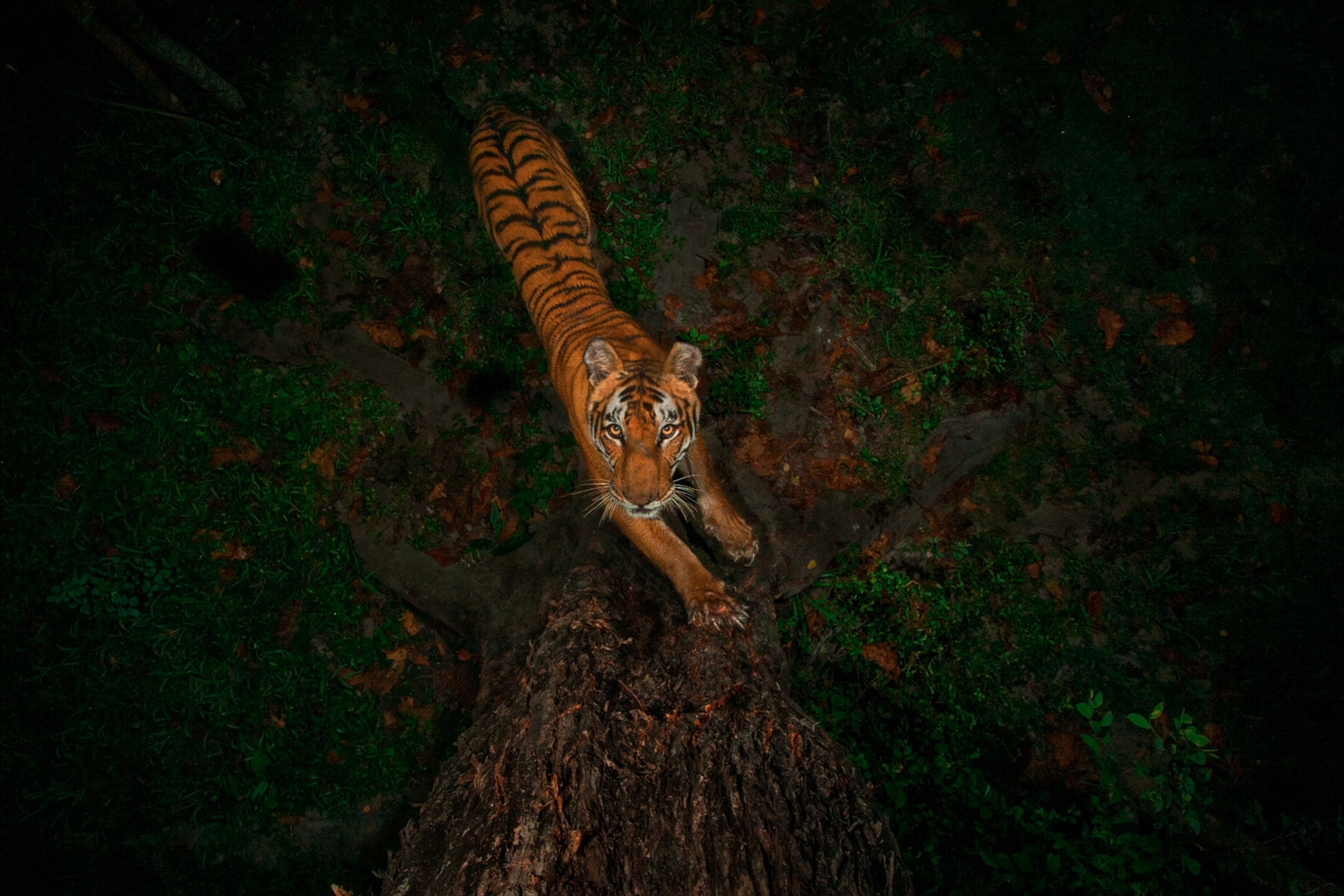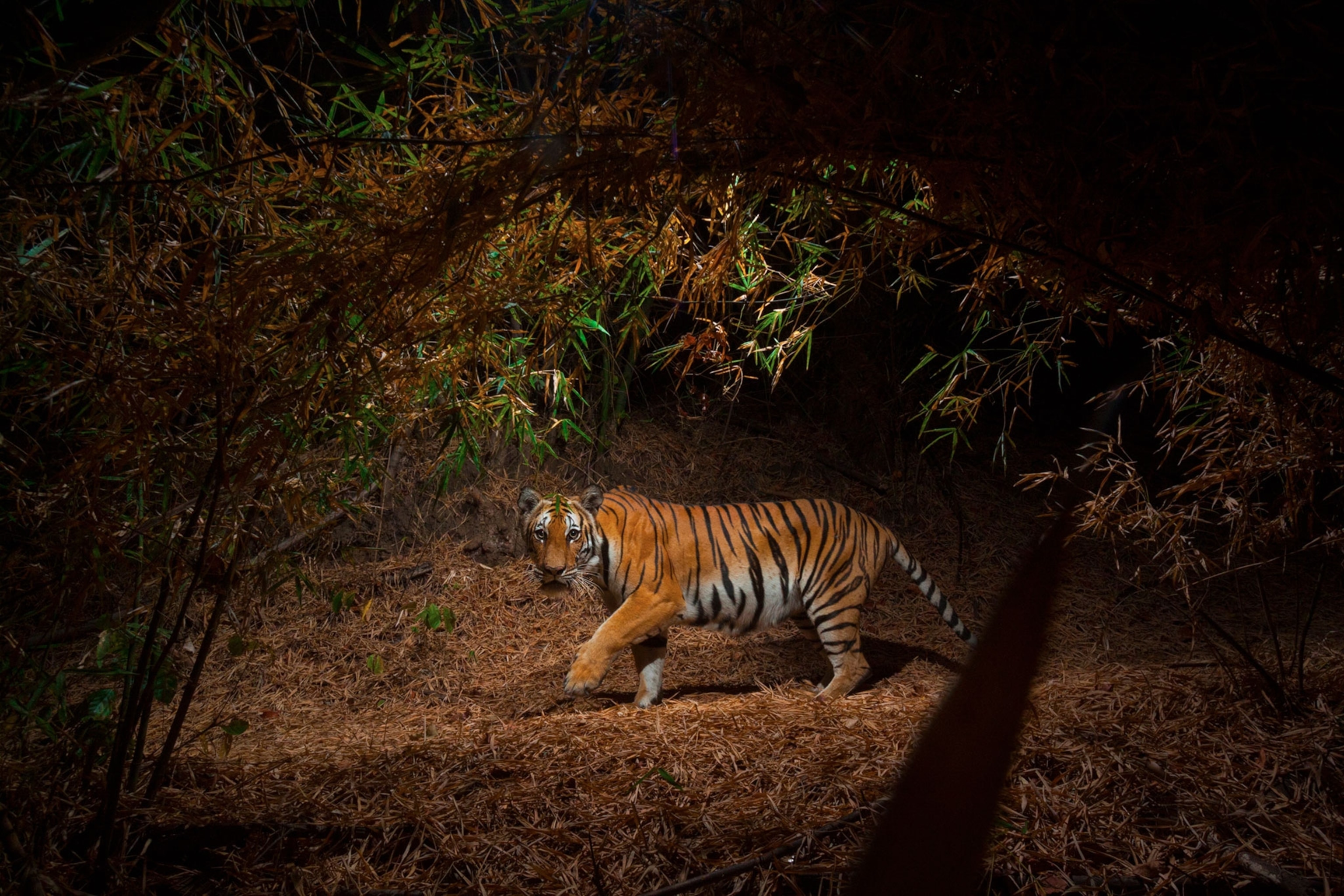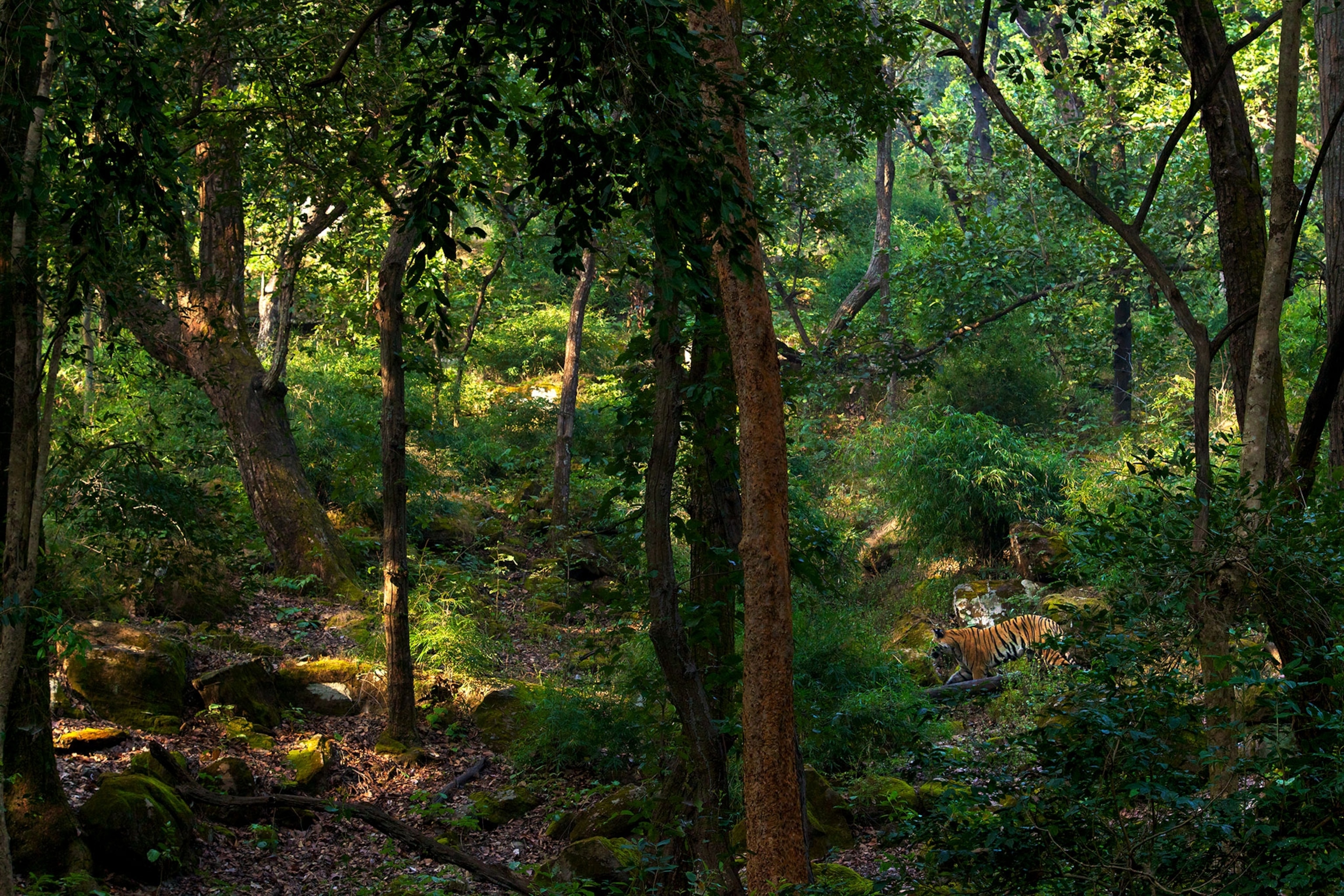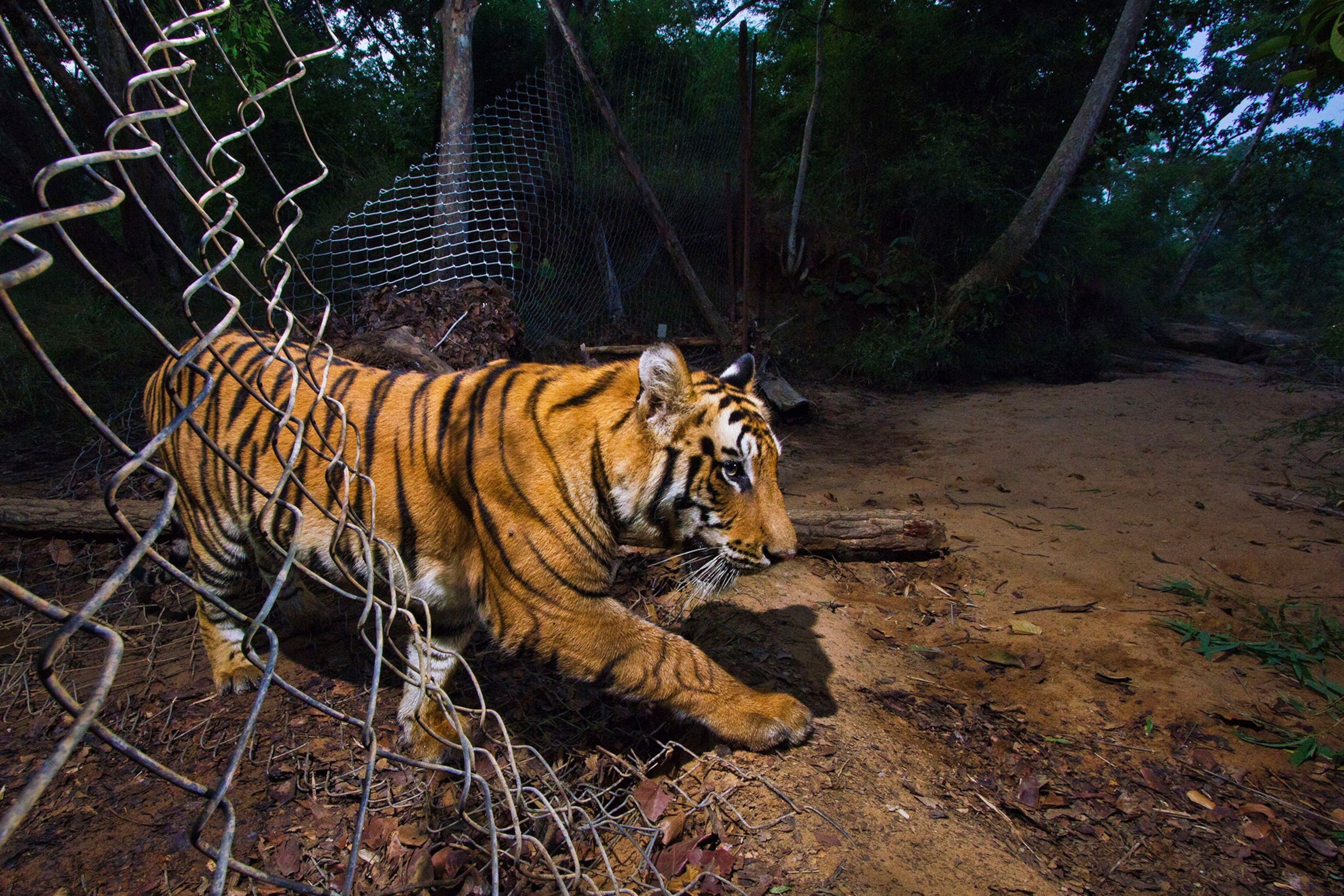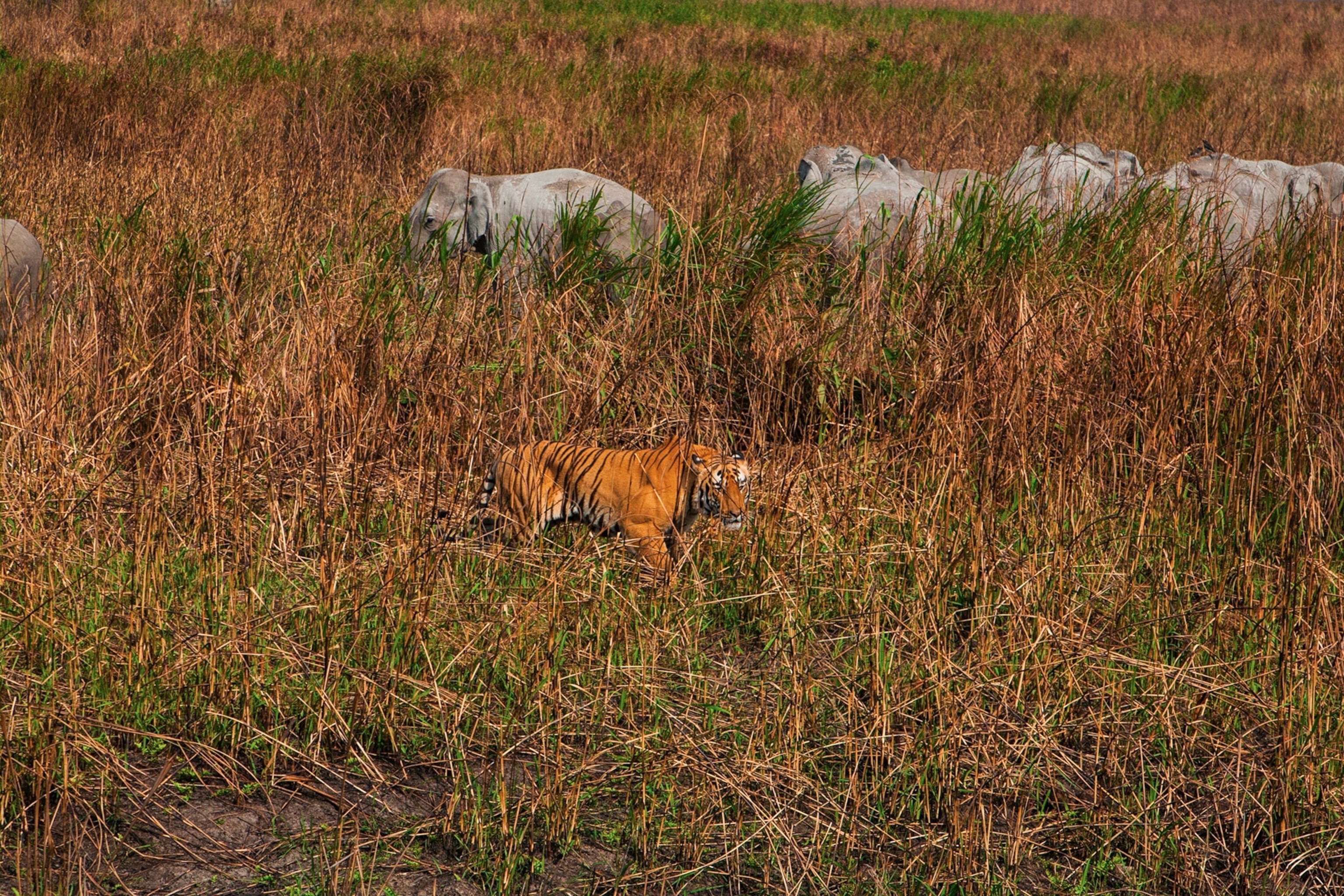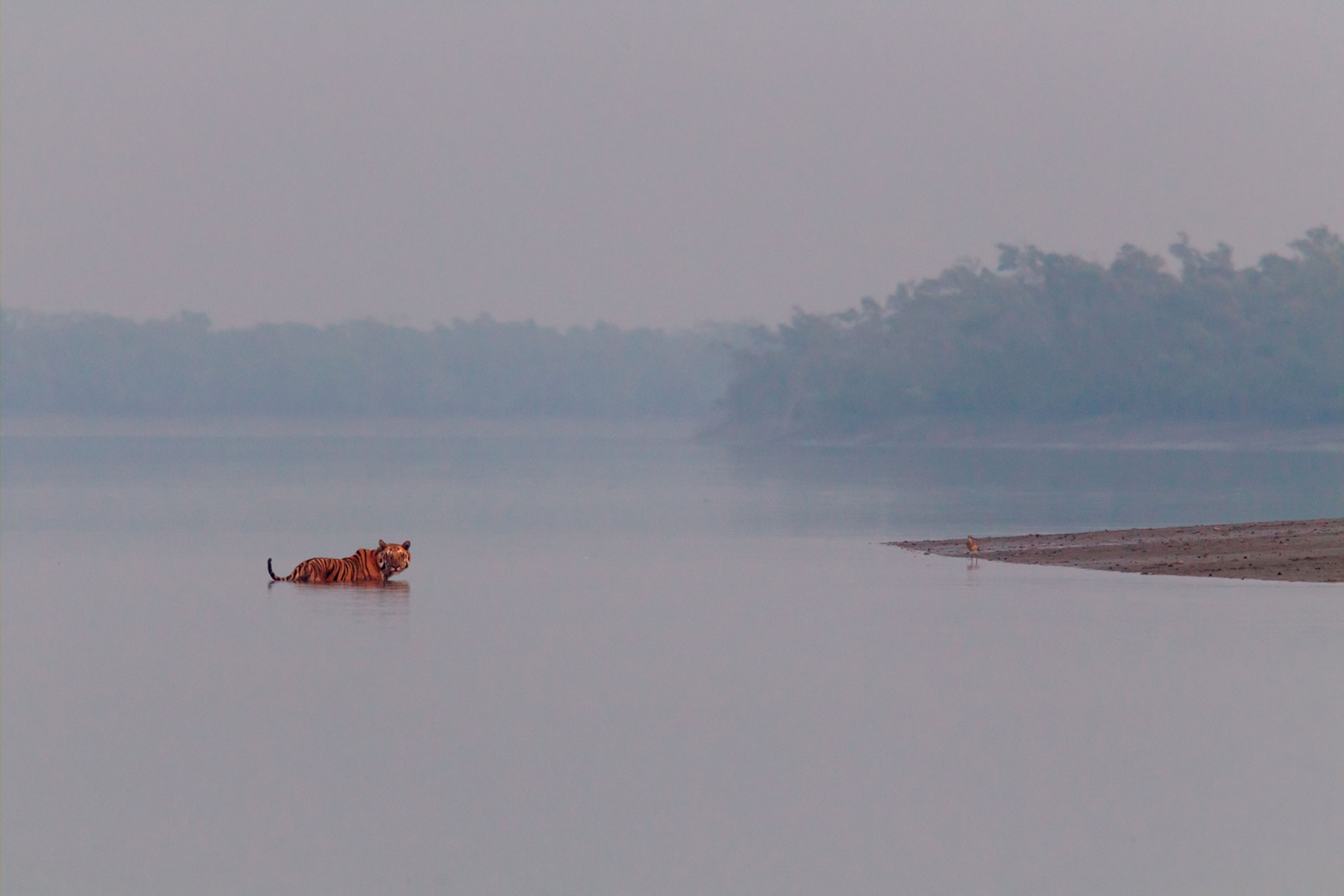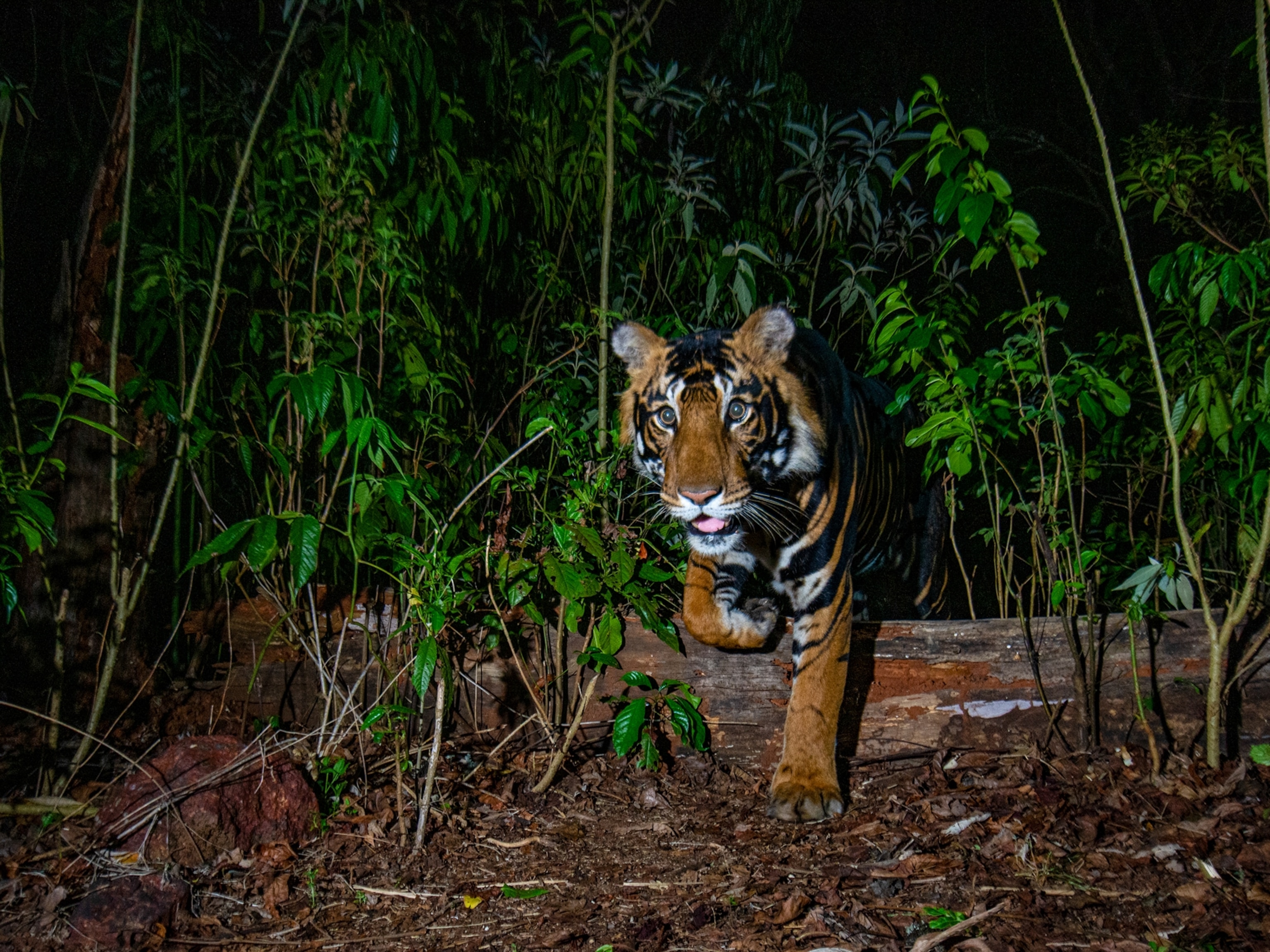Scientists estimate there are now 235 wild bengal tigers in Nepal, a huge leap from 2009, when there were only about 120 of the endangered animals.
In just the last four years, the population jumped nearly 20 percent, up from 198 of the animals, according to analysis performed by Nepal’s Department of National Parks and Wildlife Conservation, along with conservation groups including Panthera and the Zoological Society of London.
The groups used images from camera traps and employed statistical models for the estimate of animals in five of the country’s national parks. Scientists hope success with Nepal’s tiger conservation “recipe” might inspire other countries within wild tiger ranges to increase their efforts to protect and study the iconic and beloved big cats.
While 235 may seem like a small number, it’s still a significant conservation success, says John Goodrich, tiger program senior director for Panthera, the global cat conservation group. And that represents a significant percentage of the world's total tiger population, estimated at just under 4,000.
“They’re doing a smashing job of protecting their tigers,” Goodrich says.
Small but Significant
Considering the impact on an individual park shows the importance of small, but significant gains. Before 2010, Nepal’s Parsa National Park barely had any tigers. The area, called the Terai lowlands, is a narrow forested watershed along the base of the Himalaya Mountains, a junction of the foothills and grasslands. It’s also home to other animals including Asian elephants, sloth bears, sambar deer, great hornbills, and greater one-horned rhinoceros, a flagship species for Nepal
After a 2010 meeting of The Global Tiger Initiative—a program organized by the World Bank, among others—Nepal and 12 other countries that are home to the animals committed to doubling their tiger numbers by 2022. “Nepal has taken that very seriously,” and done very well despite being one of the poorer countries in the program, Goodrich says.
The population in Parsa is now estimated to be about 18 tigers, up from 7 in 2013. The success is likely due to moves such the government’s decision to expand Parsa’s borders and increase the number of wildlife soldiers that patrol the country’s protected areas to 8,000. It has also worked with villagers living within the protected area to voluntarily relocate, develop livelihoods to reduce dependence on forest products, and to avoid human-tiger conflicts such as livestock depredation.
“Tigers and people don’t live together well,” Goodrich says. “There’s always conflict there, so creating those inviolate reserves [where] tigers have that peace from people is a big deal.”
Playful Cubs
The recipe tigers need to survive is about “peace and prey,” he adds. At Parsa, establishing these conditions where tigers have space, prey, and protection from poaching and habitat destruction enabled the increase could happen relatively quickly. Tigers in neighboring Chitwan National Park quickly spread into the area — and in this protected space with ample prey, free from human interference, adults lived longer and a glut of cubs were born. Without neighboring tigers spreading into the territory, it might have taken 10 years or more to reach the same numbers.
The population study also revealed two other encouraging clues about Nepal’s tigers: Increased longevity of the adult animals studied from year to year, and playful, apparently healthy cubs.
“What you want to see in a healthy tiger population is good adult survival,” Dr. Goodrich says. But playful cubs—which shine on camera, but actually reveal important information to scientists—are also a good sign.
“The fact that they are playing suggests that they’re well fed and have the extra energy to play. You look and think, ‘Wow, this is evidence of a healthy tiger population.’”


